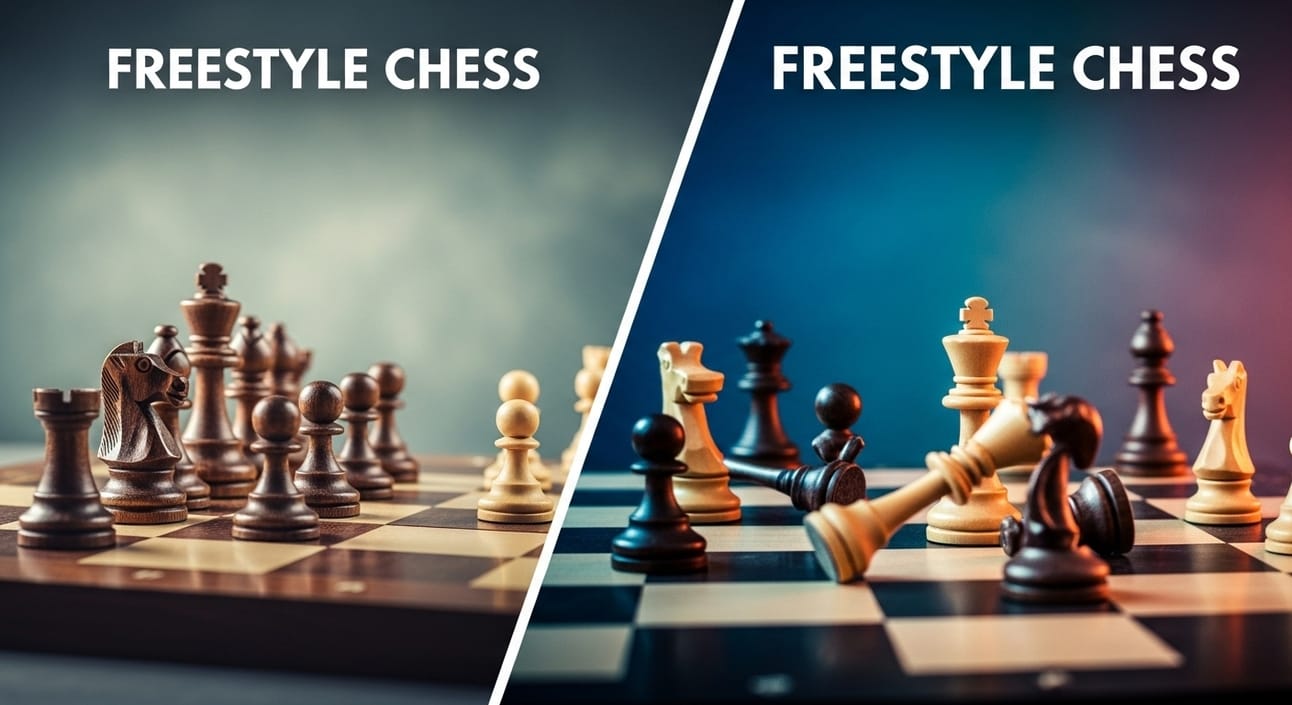- Checkmate Weekly
- Posts
- What Is Freestyle Chess? The Rules Behind Chess’s Fastest-Rising Variant
What Is Freestyle Chess? The Rules Behind Chess’s Fastest-Rising Variant

In 2025, the chess world is buzzing about Freestyle Chess—a variant that’s turning tradition on its head and attracting elite players and new fans alike. But what exactly is it, and how does it differ from classical chess?
At its core, Freestyle Chess is built on a foundation known as Chess960, a variant created by former world champion Bobby Fischer. The “960” refers to the number of possible ways the pieces on the back rank can be arranged at the start of the game. That’s right—in Freestyle Chess, the pieces don't start in the familiar order of rook-knight-bishop-queen-king-bishop-knight-rook. Instead, they’re randomized (with a few rules to keep the game playable), and each player starts with the same setup.
What Makes Freestyle Different?
Here’s where things get exciting: because the starting position is unfamiliar every time, players can’t rely on memorized opening theory. Instead of drawing from books or engine-prepared lines, they have to think on the fly, solving the game from scratch. That levels the playing field and places a premium on creativity, adaptability, and raw calculation.
While the term "Freestyle Chess" has started to represent a broader entertainment-focused movement—with lighting, interviews, and high-production broadcasts—the rules on the board remain rooted in Chess960. The key differences from classical chess are:
Randomized starting position: Only the pawns remain in their usual places. The rest of the back-rank pieces are shuffled based on a random draw.
Castling is still allowed, but how it works depends on where the king and rooks start. The final result mirrors standard castling (the king ends up on c1/g1 and the rook on d1/f1, for example), but getting there can look strange. It’s one of the trickier rules for newcomers to grasp.
Same rules of movement: Once the game starts, all pieces move and capture the same way they do in classical chess.
Why It Matters
Freestyle Chess levels the field between humans and machines, pushes players into uncharted territory, and gives fans the thrill of unpredictability. For many, it’s a breath of fresh air—a version of chess that rewards ingenuity over rote memory.
As more players and tournaments embrace this dynamic format, Freestyle Chess is carving out a future where every game truly starts from zero—and every move counts.